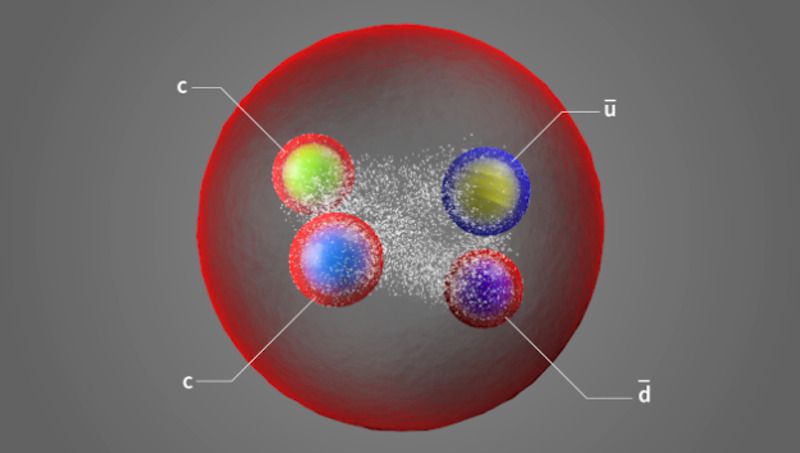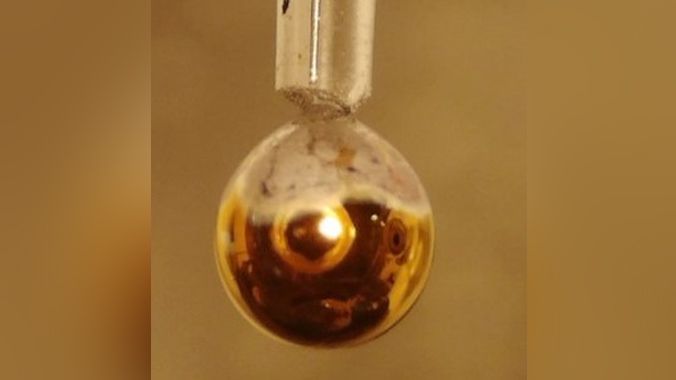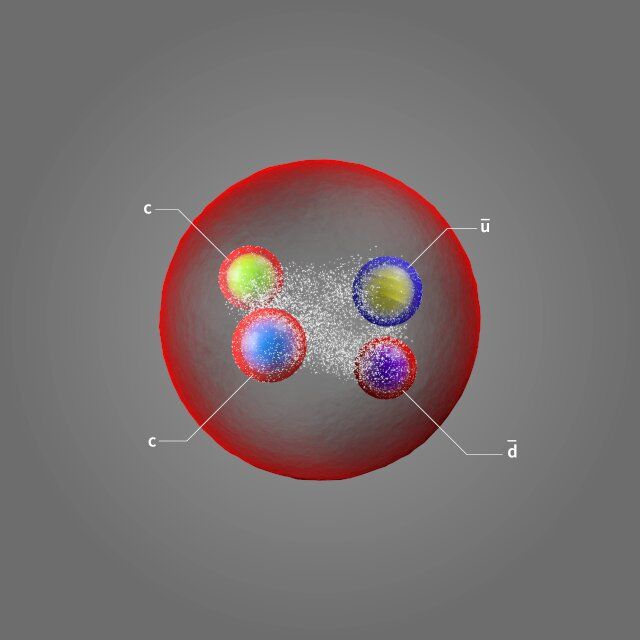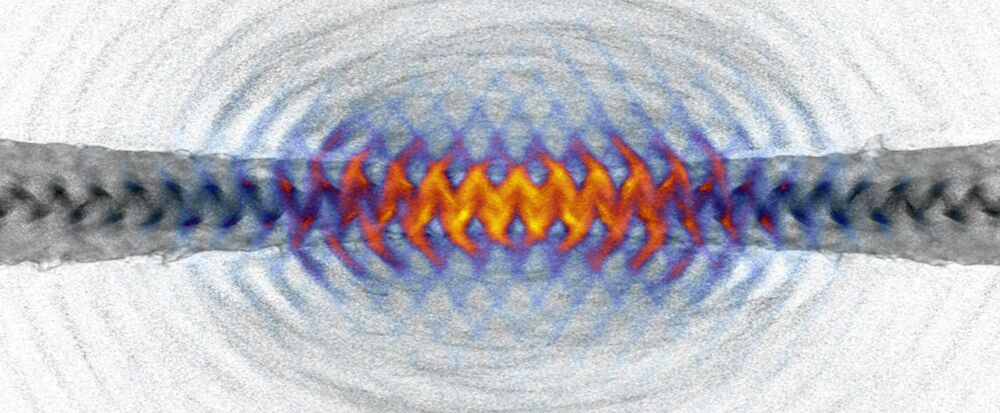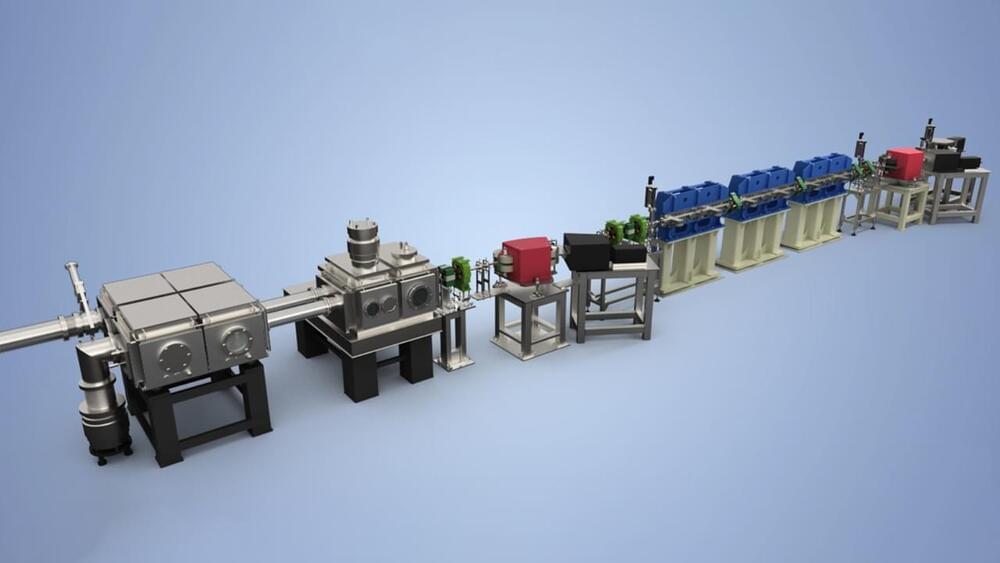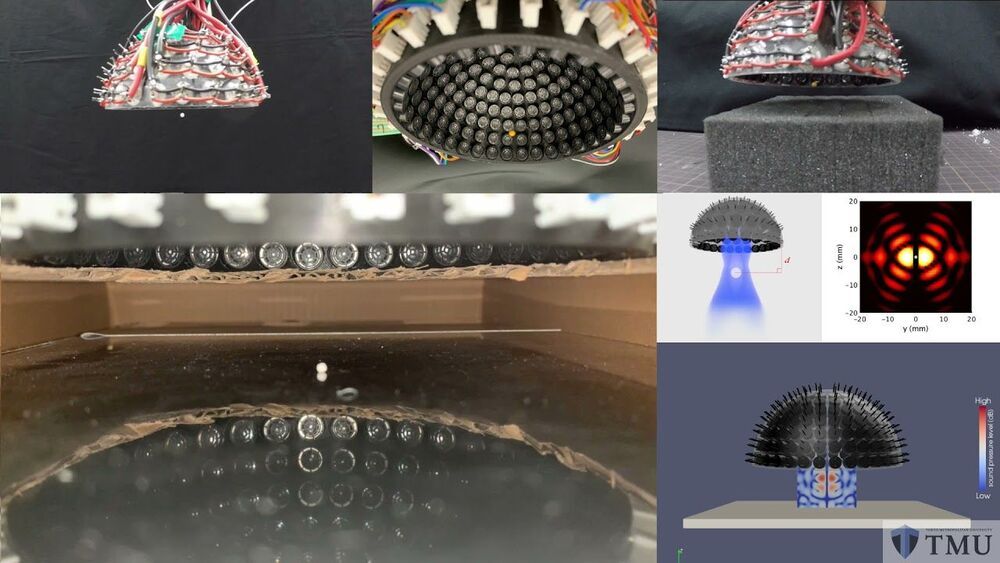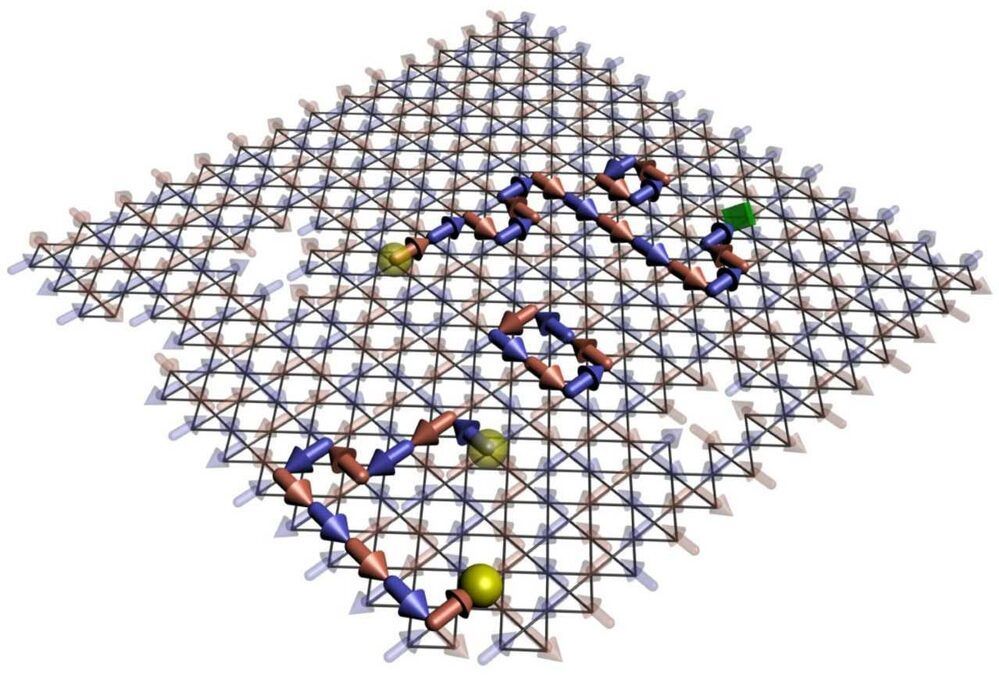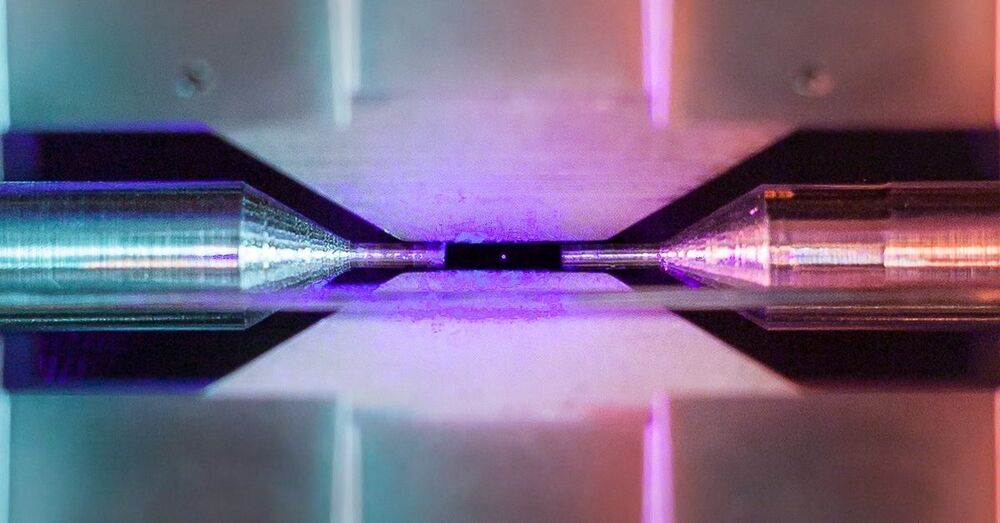Jul 30, 2021
New particle discovered at CERN is a long-lived double charmer
Posted by Omuterema Akhahenda in category: particle physics
Physicists at CERN have discovered an exotic new particle that’s quite charming. Known as Tcc+, the particle belongs to a rare class called tetraquarks, and its unusual composition makes it the longest-lived exotic hadron found so far.
Matter is made up of fundamental particles called quarks, which come in six “flavors”: up, down, strange, charm, top and bottom. These quarks group together in different ways to make up different types of matter – baryons like protons and neutrons are made up of several quarks, while mesons are formed from quarks paired with antiquarks, their antimatter equivalents.
Baryons are usually comprised of two or three quarks, but exotic baryons made up of four or five have been discovered in recent years, after being theorized for decades. Tcc+ is one of these unusual particles with four quarks, known as a tetraquark.
